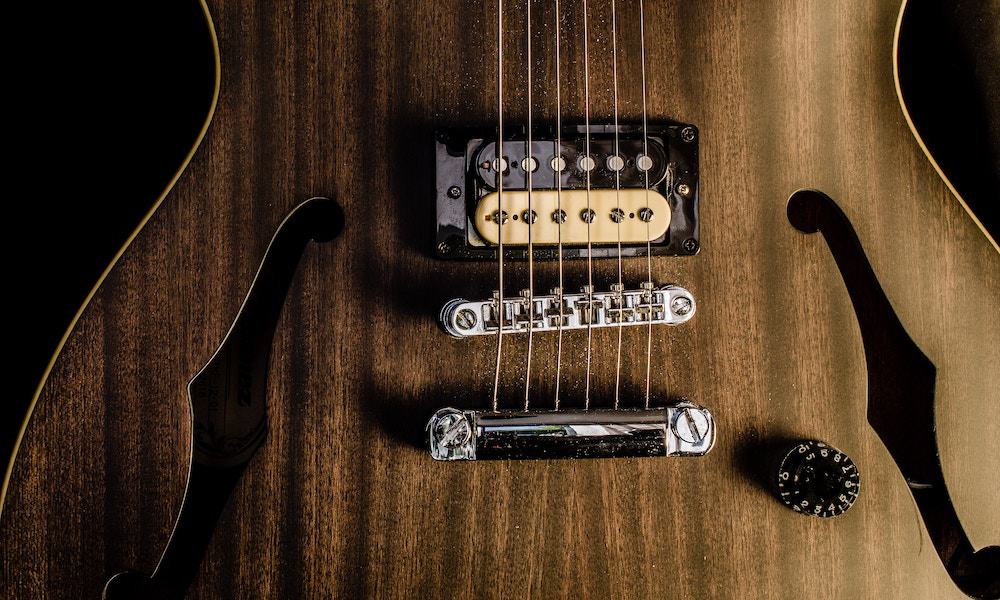Features
What Exactly Is an Electric Guitar Pickup?

Jazz Guitar Today reached out to our good friend Evan Skopp of Inside Track International to write an article on electric guitar pickups. Evan provided us with a four-part series on the topic!
Part 1: Cork Sniffers vs. Blues Lawyers vs. Virtuosos vs. Noobs

Since the advent of the Internet, the back-and-forth flow of information on all conceivable topics is profound and unprecedented.
Back in my day, when I wanted to learn about things like guitar pickups, it entailed reading gear magazines, maybe borrowing a basic electronics book from the library, and often chatting with techs in the back of a music store or on the phone with a like-minded gear nerd. Nowadays, with pickup websites and guitar gear forums, there is no shortage of easily accessed information. Unfortunately, anyone on a web forum with a strong opinion and a high post count can publish their insights and claim the “guru” mantle whether or not the information they provide is factually correct.
Couple the proliferation of published opinions with an unhealthy dose of that prevalent snarkiness for which web forum are famous, and you have all the makings of an informational circle jerk. Not that everyone on web forums is a social outcast hunkered down in his mom’s basement spewing conjecture—in fact, there are many wonderful, helpful, and woefully underpaid forum admins, brand ambassadors, and contributors out there with lots of great advice; but you might have to wade through a swamp of cork sniffers to find them.
The purpose of this article is to speak to the guitarist who is just starting their tone journey and, for whom, a visit to the perilous underbelly of a pickup forum may be too intimidating.
We’ll go over the basics of what a pickup is, how the various components affect tone, and how to find the right pickup for your guitar. If you want to take this to the next level, by all means, check out the web forums for far more insight. But don’t be surprised if you ask, “Would a Lollar Low Wind Imperial work in my ES-335?” and then receive answers like, “Sure, but only if you first change the magnet to an un-oriented, roughcast, alnico 4 and then swap out the non-adjustable coil for a late-1986 or early-1987 DiMarzio PAF—but only one of the cream colored ones—and preferably one that was used exclusively to play Steely Dan-era Larry Carlton licks.” To paraphrase David Byrne, “How did we get here?”
Two quick notes: First, there are highly specialized pickups available that may contradict some of the broad statements used in this article. So, I will use phrases like, “generally speaking” knowing that there are, occasionally, exceptions to the rules. Second, installing a pickup is not complicated and there are how-to videos galore. However, if you don’t feel 100% comfortable taking a hot soldering iron to your trusty steed: don’t. Let a qualified tech do the work.
So what Exactly Is a Pickup?
A pickup is a device that is central to the electric guitar. In fact, if it doesn’t have a pickup, it’s not an electric guitar. Essentially, a pickup is a coil of wire and a magnet. The pickup works in concert with the ferrous alloys that are used in electric guitar strings; those alloys are found in the plain strings, the cores of the wound strings, and the wrap wire used on the wound strings. The magnet creates a magnetic flux field around the strings. When the strings vibrate—through a process of physics called induction that I don’t pretend to understand—those vibrations are converted into a current that flows through the guitar, down a cable, and into an amplifier where it comes out of the speaker in the form of Maj7 chord or an intricate single note run or a full-on, gymnastic, progressive metal riff.
A pickup is a transducer, meaning it changes energy from one form to another.
In this case, from the mechanical energy of string vibrations into an electric current. Similarly, a speaker is a transducer
The type of pickup I’ve just described is most commonly used on electric guitars (and occasionally on acoustic guitars) and is generally referred to as a magnetic pickup and it works with magnets and steel guitar strings. There’s another type of pickup technology that’s often used on acoustic guitars (and occasionally on electric guitars) that uses piezo-electric film or crystals which are in indirect contact with the strings and convert the pressure created by string vibrations into a current. Piezo pickups work with steel or nylon strings. Other than this brief mention of piezo pickups, we’re going to focus solely on magnetic guitar pickups in this article.
In the next sections, we’ll dive deeper into pickups, but first, think for a moment about the two most common types of electric guitar pickups: the thin single coil pickups used commonly on Strat and Tele guitars and the fatter double-coil pickups used on Les Paul guitars—which we’ll refer to as humbucking or humbuckers.
NEXT: Read How Pickups Affect the Tone
Evan Skopp is co-owner and co-founder of Inside Track International, a sales and marketing firm whose main client is D’Addario and whose pickup clients have included Lollar, Seymour Duncan, and Nukleus, a new start-up. Prior to forming Inside Track, Evan spent two decades as vice president of Seymour Duncan where, at various times, he headed the company’s marketing, sales, product development and artist relations departments.
-
Jazz Guitar Lessons4 days ago
New JGT Lesson: Dissecting Versions of Gershwin’s “Our Love Is Here To Stay”
-
Jazz Guitar Lessons3 weeks ago
New JGT Lesson: Common Chord Grips, Voice Leading, Quartal Harmony, And Many Other Techniques
-
Jazz CD Releases3 weeks ago
John Scofield Touring – Supporting His Latest Album, “Uncle John’s Band”
-
What's Happening in Jazz1 week ago
New York City Braces for the Electrifying Inaugural Guitar Masters Festival



















